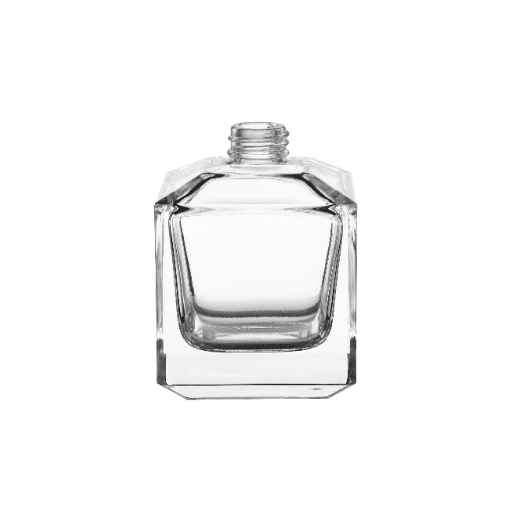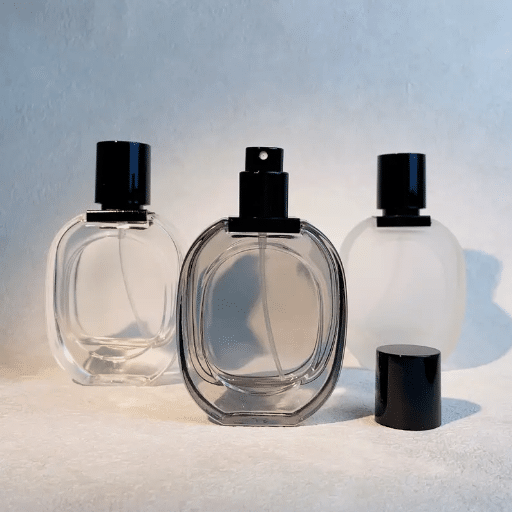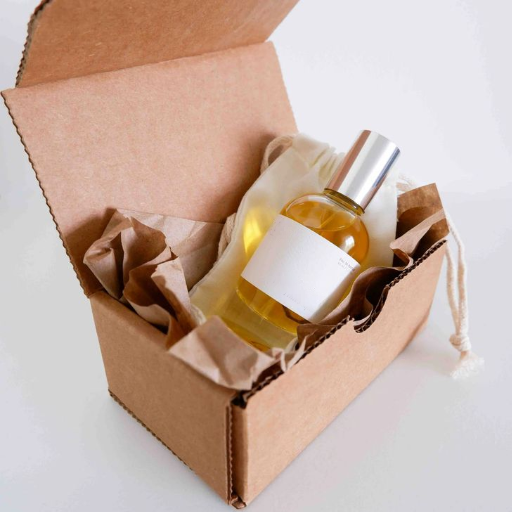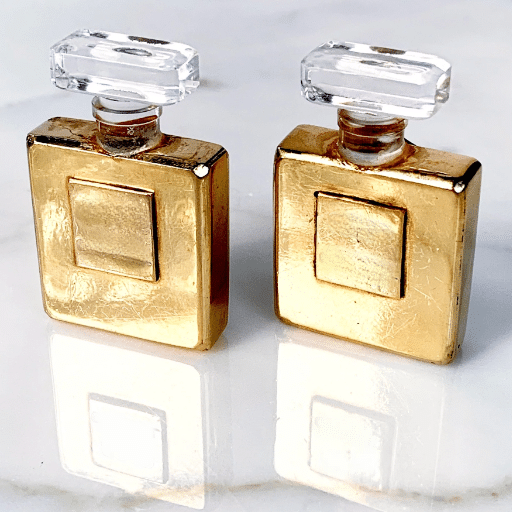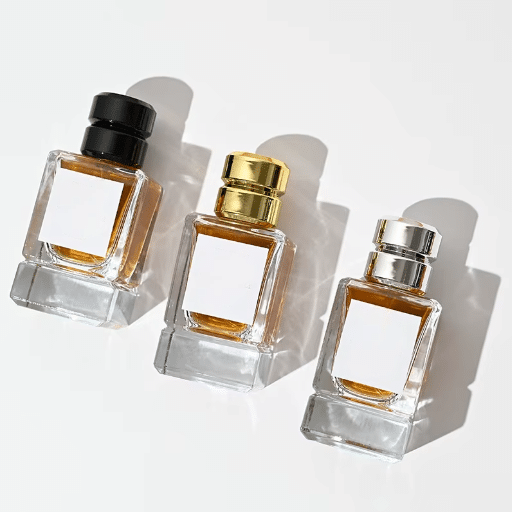Choosing the proper perfume bottle size is very important for both brands and customers because it encapsulates one of the main factors that can either make the market attractive or ruin its sales potential. The varied tastes of different customers and the global market’s differing regulatory standards mean that understanding how bottle capacity aligns with trends, demographics, and distribution needs is of utmost importance. The guide will act as a beacon, helping you find the ideal bottle size for different regions and audiences by navigating the complexities of this selection. It will help you make your product functional, attractive, and marketable. Whether you are aiming at luxury shoppers, travel lovers, or eco-friendly buyers, the article will reveal its treasures of knowledge to help you make informed choices that align with your target market.
Understanding Perfume Bottle Sizes

Perfume bottle sizes are conventionally measured in milliliters (mL) or fluid ounces (fl oz), with standard options ranging from 5 mL to 100 mL or more. The mini sizes, 5 mL or 10 mL, are perfect for trips or for getting familiar with the scent, enabling purchasers to test a perfume without risking larger packets. The intermediates, such as 30 mL or 50 mL, have a wide base and are thus readily available to users. Large sizes are typically 75 mL to 100 mL, so people who use one particular scent as their signature will buy this to keep a full bottle at the ready. The choice of a specific size is mainly based on the target group and their needs, such as users who want it to be easy to carry, use it frequently, or prefer a luxurious presentation.
What are Standard Perfume Bottle Sizes?
The estimated volume of a standard perfume bottle is usually expressed in milliliters (mL) and adheres to industry standards that reflect customers’ varying requirements and tastes. Among the very popular sizes are the 5 mL and 10 mL, which are sometimes used for samples and are known as “travellers”. On the other hand, the 30 mL and 50 mL are considered a moderate concern, as they offer both the attractive portability and the possibility of good value, making them appropriate for daily use or as a gift. The larger sizes, such as 75 mL, 90 mL, and 100 mL, are especially made for customers who want their favorite scent always in stock as a long-term investment. Recently, the 150 mL and 200 mL sizes have become trendy, making them a cost-effective option for high-usage scents. These standard sizes also reinforce the scalability of production and the compliance with international shipping and retail requirements.
Different Sizes of Perfume Bottles Explained
| Bottle Size (mL) | Typical Use Case | Portability | Cost Efficiency | Popularity Level |
|---|---|---|---|---|
| 5 mL | Travel-friendly, sampling | Highly portable | Low-cost | Moderate |
| 10 mL | On-the-go use | Portable | Cost-effective | High |
| 30 mL | Occasional usage | Easy to carry | Moderate | High |
| 50 mL | Everyday use | Compact | Balanced | Very high |
| 75 mL | Gifting, moderate frequency | Convenient | Good value | High |
| 90 mL | Daily wear | Compact and light | Efficient | Growing |
| 100 mL | Long-term supply | Less portable | Very efficient | Extremely high |
| 150 mL | Heavy use, cost-saving focus | Bulky | Economical | Increasing |
| 200 mL | Bulk purchase, frequent use | Least portable | Maximum savings | Growing interest |
Importance of Choosing the Right Size
Proper product sizing is crucial not only for meeting the specific usage requirements of a given size but also for ensuring cost efficiency and improving the overall user experience. Small sizes, such as 50 mL, are most suitable for occasional or travel use, as they are portable and easy to use. On the other hand, larger sizes like 150 mL or 200 mL are the most economical for frequent, high-volume use; however, they are not easy to carry around. In line with industry trends, demand will rise for sizes that combine convenience and long-term value, as consumers shift their priorities towards practicality and economic efficiency. It is often a good marketing practice to study purchasing habits and usage frequency, as this helps align product sizes with users’ levels of satisfaction and ultimately enhances the company’s competitiveness in the market.
Choosing the Right Size for Your Needs
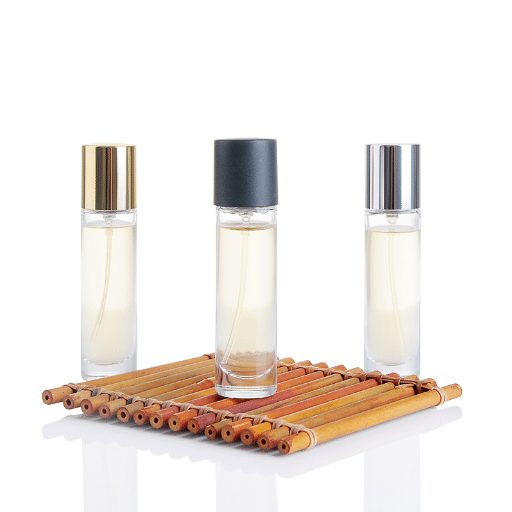
Start by looking at different alternatives, and if you are unsure, go for the smallest one because it is more convenient and a cheaper combination for irregular use. The larger the size, the more cost-effective it is for regular or large-volume use. Likewise, owing to the fact that smaller options use less space, storage convenience may be one of a small size benefit. On the other hand, the large one will need a storage solution specially designed for it. Unit price is the one to look at when searching for a good value-for-money deal and to keep both current and future use requirements in check.
Factors to Consider When Choosing Perfume Size
Usage Frequency
Evaluate your frequency of perfume use. For daily use, larger bottles (like the 100ml or 3.4oz ones) are usually the most economical in the long run and less tiring to repurchase. On the contrary, those who use perfume sporadically may find 30ml or 1oz bottles enough, so they can avoid waste and keep the fragrance fresh throughout.
Fragrance Longevity
The durability of fragrances differs depending on factors such as ingredients, storage conditions, and exposure to light and heat. Generally, perfumes have a shelf life of 3–5 years, after which their quality starts to degrade. If usage is slow, smaller sizes could be just right, keeping the fragrance alive until the bottle is finished.
Portability and Travel Needs
Compact options like 10ml or 1oz bottles, which are TSA-compliant and easy to carry, are preferred by travelers. These sizes also fit nicely in handbags or travel kits, providing on-the-go users with easy access without compromising accessibility.
Cost Per Milliliter
You can always count on the larger bottle for more milliliters or ounces. Just to give you an idea, a 100ml bottle, which costs $100, is equivalent to $1 per milliliter, while a 30ml bottle priced at $50 works out to $1.67 per milliliter. In a scenario like this, the best pick is a big bottle to save money and avoid running out of stock too quickly.
Storage Space
Check the available storage capacity of your perfume collection. The small bottles may need only a tiny space and can be housed in the corner of your room, whereas the large ones might require their own shelf or locker. A poor storage choice can spoil the perfume’s scent.
Fragrance Selection and Variety
Those of you who like to mix and match and play around with different scents can really make use of the small bottles, as they let you add a new fragrance to your collection without buying large quantities. This is particularly a great way for you to discover your favourite perfumes or the season’s trends.
Travel Size vs. Full Size: Which Should You Choose?
| Parameter | Travel Size | Full Size |
|---|---|---|
| Portability | Compact and easy to carry | Bulky; better for home use |
| Storage Space | Minimal space required | Needs dedicated storage area |
| Cost | Lower initial investment | Higher upfront cost, economical per ml |
| Product Lifespan | Shorter period given reduced volume | Longer-lasting due to larger quantity |
| Variety | Allows trying multiple options | Limits variety but offers larger supply |
| Travel Regulations | Compliant with TSA liquid limits | May exceed transportation restrictions |
| Purpose | Ideal for short-term usage | Suitable for long-term, daily use |
| Waste Generation | Generates less waste per purchase | Can result in more leftover product waste |
Cost per Milliliter: Evaluating Value in Perfume Sizes
To handle the variety in perfume sizes and their costs, the cost per ml is the primary metric to calculate. The more extended the supply of small bottles, the more likely it is that their price will go up and people will see them as rare; i.e., they have paid more for the bottle, which is why it is more expensive in this case. For instance, a 30ml bottle might retail at $60, which equals only $2 per milliliter, and a bigger 100ml bottle priced at $150 cuts the cost to $1.50 per milliliter. The increase affects the price difference due to production scale, as companies face higher average bottle costs when a smaller quantity is produced and a larger share is used for packaging.
Nevertheless, it is equally important to take personal usage patterns into account when determining the value of the item. People who use the fragrance in small amounts might still benefit from the less expensive, larger-size bottled perfume, even though the price per milliliter is higher, since it will cause less product deterioration over time from exposure to light, heat, and air. In the opposite case, the people who constantly use the fragrance might conclude that the larger sizes are more economical in the long run. The brands also state that people who purchase the product during the promotion period could save more money than those who do not buy at the same time. Consequently, evaluating not only the extent of our happiness but also its cost will result in a better, more customized purchase decision and a more financially efficient approach, too.
Perfume Bottle Sizing for Different Markets
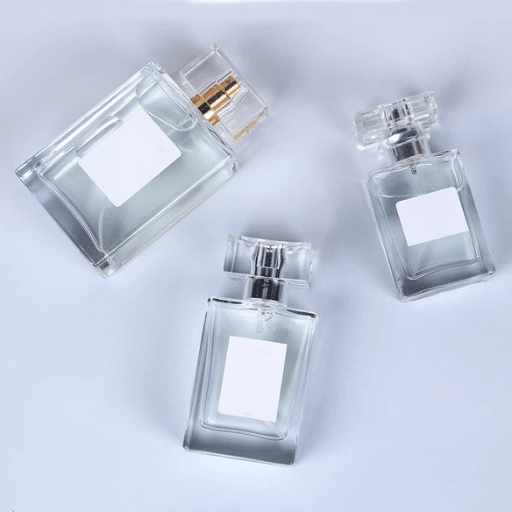
Perfume bottle size preferences can vary significantly from one region to another. The 30ml and 50ml sizes are a hit in Europe, as most customers there prioritize being mobile and like having more than one option. On the other hand, 100ml is the way to go in the US, where people relate it to better value and more prolonged use. On the other side of the picture, many Asians who like to keep powder rooms stocked, mostly with limited-edition products that frequently change, will most likely go for the 5ml or 10ml size, which allows them to take items with them in their pockets. Therefore, for brands that want to offer products that work for customers and meet their needs effectively, they should have acquired knowledge of these regional preferences before their products were launched and on the shelves.
Understanding Regional Preferences in Perfume Sizes
Regional preferences for perfume sizes are influenced by key factors, including cultural traditions, economic conditions, and lifestyle preferences. An example of this can be seen in North America and Europe, where customers are more likely to choose larger sizes of 50ml or 100ml because of their longer use and a better cost-per-use ratio. This favor aligns with the populace’s tendency toward practicality and the habit of buying many products at once, particularly in countries where the scent is a daily necessity rather than a luxury.
However, around the world, the trend is obviously the other way. Asian territories prefer mini formats and opt for sizes like 5ml or 10ml. Their favorite formats reflect the demand for miniature, quick-to-use and trendy options that go along well with the culture there. This trend is notable in the sale of small-sized gift sets and special edition packages in global markets, even though the designs are not the main focus or driving factor in demand. Mini fragrances are not only less heavy on the pocket but also tend to attract consumers from a broader financial perspective.
Moreover, environmental issues are increasingly being brought to the forefront in the global consumer behavior arena. In some places, the use of refillable bottles and eco-friendly packaging is becoming increasingly the norm. This trend has also affected demand for mini perfume units compatible with refills. These particular buyer whims show how crucial it is to conduct thorough market research and adjust products to satisfy a wide range of buyers with differing tastes.
Impact of Cultural Trends on Perfume Bottle Sizes
Cultural understandings of luxury and ease have significantly influenced the development of perfume bottle sizes. In other words, the trends in Scandinavia, which are closely related to minimalism, support the use of small, simple perfume bottles. On the other hand, in Middle Eastern countries where scents are deeply rooted in tradition, fragrances are most preferred when they come in larger, more ornate bottles because they mirror the lifestyle of the rich and powerful. Furthermore, the trend of mini-size perfumes being popular in global markets reflects a need for the scent’s effortless portability and accessibility, especially among the usually very mobile travellers and convenience-minded city dwellers.
Statistical analyses indicate that consumer interest in miniatures and refillable perfume options has increased significantly. In regions where this has occurred, sales of these product formats have even experienced double-digit growth. A move like the one reviewed is likely associated with the general shift in consumer lifestyle, towards the sustainable and mobile end of the scale. The fragrance industry itself is changing more rapidly, and so it is very common to be on the lookout for new things. One beautiful aspect of changing technology is the possibility for these companies to monitor the impact of their progress, such as the reduction in carbon emissions, deforestation, land abandonment, and concentrated urbanization, which is happening more manifestly right now.
Market Analysis of Full Sizes vs. Travel Sizes
The market rivalry between large and small products in the fragrance industry reflects changes in buying habits and consumer preferences. The big perfumes have so far been the main product type in the market, and they remain the leading choice because of their price and longevity; hence, they are wanted by loyal customers who can invest in their signature scents. On the other hand, demand for smaller products has increased significantly, driven by modern lifestyle factors such as urbanization, busy lifestyles, and a greater attraction to variety and personalization.
Travel-sized options, as the name suggests, are among the main reasons for the increasing consumer preference. People generally want to carry their stuff with comfort, and they wish to try something different every time, so these suitcase-sized packages meet that expectation. The small product size not only allows customers to try many different scents without committing to a full-size purchase but also aligns with the shift towards curated and customizable experiences. It has also come to the notice that this is a perfect gift option for people who are always on the go, and that they might as well buy one for themselves due to that.
Sustainability is the main purpose of travel-size items, along with other eco-friendly, design-focused products, e.g., refillable or eco-conscious. These perfectly fit with the movement that consumer society is very well aware of today. Meanwhile, big-size products are indeed transitioning to environmentally friendly goods and, as a result, adopting measures such as containers made from recyclable materials and refill stations to remain competitive in the changing market. Taken as a whole, both categories play a crucial role in the fragrance industry’s continuous thriving through innovations and consumers’ understanding.
Cost Considerations of Perfume Bottles
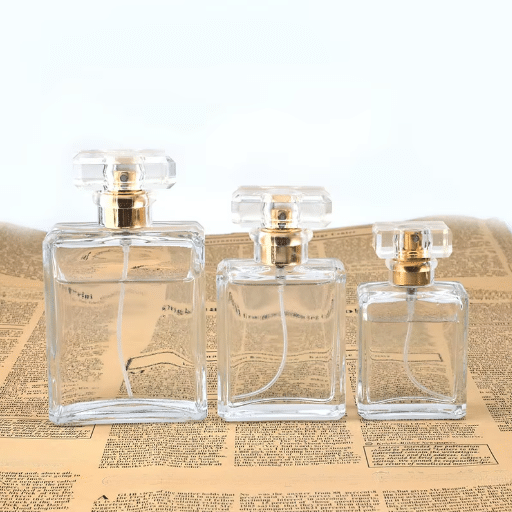
Several factors determine the price of a flask. The selection of the material to use, the manufacturing approach, and the design complexity are the most important factors. Glass, crystal, or metal, which are at the top end of the material scale, generally have a higher production cost than plastic. Also, a lot of money is needed for custom molds or detailed pattern design, because the output has to be so accurate. On the other hand, green or refillable features are considered additional costs to the process; at the same time, they are met by the people who want to be environmentally friendly. Cost and quality may not be directly related, but fast, effective production and the use of standard designs will still help lower costs without compromising quality. It will be the most vital factor in overcoming weaknesses in design, functionality, and manufacturing processes when it comes to managing costs effectively.
Understanding Cost per Milliliter
The cost per milliliter (CPL) is considered one of the most critical parameters for setting product prices in specific sectors, such as health care, beauty, and drinks. The CPL can be calculated by dividing the product’s total cost by the volume of liquid in which it is sold. This will provide a uniform measure for prices of different brands and pack sizes. For example, high-end cosmetics typically have a higher CPL due to top-quality materials, a strong brand, and attractive packaging. On the contrary, low-end products could be blessed with lower CPLs through various cost advantages, such as mass production.
Industry reports show that the cost per milliliter (CPL) is mainly affected by raw material costs, production efficiency, distribution channels, and packaging innovations. An obvious case of this is that using transparent packaging might increase manufacturing costs, but it also affects consumer perception of value. However, the availability of ingredients, one of the seasonal variables, shapes market cyclical trends through price fluctuations in the CPL. Therefore, understanding the CPL — i.e., being able to analyze and evaluate factors that impact it — provides useful information that makes the pricing and purchasing process easier.
Value Proposition of Different Sizes
The benefits of goods offered in different qualities are a mix of consumer behavior, product appeal, and processing costs. The chubbier the packaging, the more it drives shoppers’ spending habits toward low-cost options while they enjoy the advantages of getting more for less, as the per-unit cost eventually declines due to economies of scale. On the flip side, smaller quantities accommodate the people who are always on the go and prefer the trouble-free experience of easily carrying the product around, stowing it, or spending less if it’s a one-time purchase only.
For example, the food and beverage sector often sees common trends: bulk purchasing by customers who want to save money in the long run, rather than consumers who want a convenient, quick-to-consume option. Moreover, according to a recent market survey, large-sized product choices are most popular in areas where bulk purchasing aligns with cultural and economic practices, while in cities with limited storage space, sales of mini products are expected to be high. Producers have to study the scales of manufacturing and distribution, along with customer demand, to create the exact size range that will not only be very profitable but also inclusive of diverse markets.
Cost Comparison: Travel Size vs. Full Size
Cost differences between travel-size and full-size products are mainly due to variations in packaging, production, and perceived value. However, the cost difference mainly results from the varying per-unit prices of full-size and travel-size items. The main cost factors for the higher-priced items are increased production complexity, specialized packaging, and the convenience factor that travel-sized items command. The explanation is that, for example, a travel-size shampoo bottle with a capacity of 3 ounces may be priced at almost half the price of a standard 12-ounce bottle, thereby illustrating a big difference in the cost per ounce. Moreover, apart from pricing, consumer behavior is a factor that determines the pricing; many are ready to pay more to have the product with them on board and also be in compliance with the airline rules.
On the other hand, in the case of full-sized products, they have the advantage of economies of scale, enabling higher production and delivery volumes at lower cost. The difference would result in a lower price per unit for consumers in most cases. But there are cases where storage constraints and lifestyle factors are the major factors, which can be a deterrent to the economic advantage of buying full-size products, particularly for frequent travelers or those with limited storage space. Understanding these cost variables is essential to both buyers’ decision-making and companies’ product offering strategies.
Maximizing Your Perfume Experience
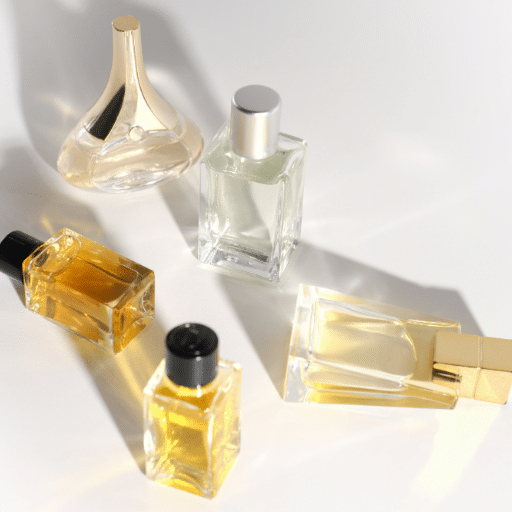
To fully benefit from your perfume, you have to apply and store it properly. The warm body parts — wrist, neck, and behind the ears —are where the application appears most effective, and the ones behind it are the fastest at scent diffusion. Another feasible way to make the scent even more long-lasting is to combine the fragrance with body lotions or oils from the same scent line; this creates a perfect match for the perfume to rest on.
Keeping the perfumes right also tops the list for preserving the scent’s original quality. Always place the perfumes in a cool, dry place, out of direct sunlight and extreme temperature changes, as these conditions can alter the composition and, in turn, the effectiveness of the perfume. These steps will not only double the duration and strength of your fragrance but also allow you to experience the intended richness and uniqueness fully.
How to Properly Store Different Sizes of Perfume Bottles
The storage of perfume bottles is handled differently depending on their size, as each bottle size presents its own preservation hazards and solutions. Smaller bottles, which are usually for journeys or frequent walks, are subject to constant temperature changes due to their mobility. They need to be kept in cases when not in use to be isolated from heat, direct sunlight, and air as much as possible. Also, miniature bottles may be placed inside resealable plastic bags to reduce fragrance loss due to air. When it comes to standard-sized wines, the biggest problem is keeping exposure to temperature and light to a minimum. If the batch of these bottles is stored in a cabinet or drawer under the same consistent environmental conditions, it is guaranteed to give good results. The boxes the products originally came in can help in more than one way, since they serve as another protective layer against light and minor accidents.
Larger bottles, which are frequently kept for a long time, require you to be more cautious to maintain the same delicate scent after a year or two. There are a few more precautions to take; for example, the bottles should be in cool, dark areas, such as separate compartments in a drawer or a cupboard, to maintain consistent conditions. By also pouring a bit of the scent into a tiny bottle for your day-to-day usage, the exposure to air will be further minimized, and the contents of the main bottle will be less likely to degrade. Apart from that, the practices specific to the different bottle sizes maintain the character of your perfumes and enable each drop to perform as intended.
Understanding the Scent Longevity in Relation to Bottle Size
One has to realize that the bottle size can directly affect the perceived scent longevity. Larger bottles, though more cost-effective, are at greater risk of oxidation as the liquid is used up gradually, due to the greater amount of air they are exposed to. This slow oxidation might change the scent a bit, potentially losing its original profile. On the other hand, smaller bottles have a better air-to-liquid ratio and are typically used up more quickly, so the chance of exposure to undermining environmental factors is lower. New industry information suggests that using airless pump containers or UV-resistant glass makes it highly probable that volatile compounds are fully protected, thereby preserving the scent as complex and intense as it was for quite some time. These things show that it is essential to consider one’s use pattern when choosing a bottle size, as it will definitely influence the fragrance’s quality and longevity.
Tips for Choosing the Right Perfume for Long-Term Satisfaction
Understand Fragrance Families
Fragrances belong to groups such as floral, woody, citrus, oriental, etc. Each group has features that are not the same between them and caters to different tastes and preferences all along the line of various events. For example, the aroma of flowers is often considered an expression of beauty and love, and the scent of citrus is the most common when we think of freshness and revitalization. People are happier with scents that accord with their personal taste, the time or place of application, and the aromatic family, according to surveys.
Prioritize Concentration Levels
The perfumes exist in concentrations which include Eau De Cologne (2% – 4% oil), Eau De Toilette (5%-15% oil), Eau De Parfum (15%-20% oil), and Parfum (20% oil or even more). On the other hand, higher oil percentages usually last longer but may cost more; this may apply best to the case of Parfum. According to the statistics provided, focusing on the right concentration in daily routines and the environment can be a positive change that leads to fewer reapplications and thus higher satisfaction.
Test Skin Chemistry Compatibility
The link between the aroma and the skin’s chemistry is the factor that influences how the fragrance evolves. pH levels, eating habits, and even hormonal changes can profoundly affect the odor of a perfume when it is worn on the skin. Do a patch test and think about the scent later—if you like it and it lasts longer, there is a good chance you’ll go ahead and buy it.
Evaluate Seasonal and Climatic Suitability
Some fragrances are influenced by the weather or season. For instance, the lightest and most delightful aqueous and citrus-based fragrances are considered the most appropriate, as they can endure and feel good in hot weather. At the same time, stronger, thicker scents like oriental gourmands or spices work best in cold weather. These adaptations help in getting the best and in personal delight all the time.
Analyze the Longevity and Sillage
The meaning of longevity is the extent to which a perfume stays on the skin, and sillage is the extent to which its scent spreads into the air around. According to ample citations in perfume reviews, if a fragrance’s longevity is quite good and its sillage is moderate, then the former is more likely to yield higher satisfaction rates, comforting people, and giving form to the notion of being there without being obstructive.
Review Brand Reputation and Ingredient Transparency
Check the brands that have ingredient transparency and manufacturing processes as well. Usually, the brands that are mindful of the environment and have a policy of using sustainable, eco-friendly, and, hence, higher-quality ingredients are those that deliver the best, long-lasting outcomes. Available online and in other sources, reviews and certifications can lead buyers to the most trustworthy, high-quality goods, aligned with customers’ values.
Reference Sources
- A Study Regarding the Relationship between the Consumer Expectations Regarding Packaging and Brand Awareness
Key Findings: This study explores how packaging, including perfume bottle design and size, influences brand awareness and consumer expectations. - Factors Affecting Consumers’ Choice of Perfume Products: The Case of Famagusta–North Cyprus
Key Findings: This paper identifies factors influencing consumer choices in perfume products, focusing on bottle design, shape, color, and size.
Frequently Asked Questions (FAQs)
What are the standard perfume bottle sizes?
Having a variety of floral water bottle sizes is one of the top points to consider. Usually, perfume bottles start with small 10 ml bottles and go up to full-size 100 ml bottles, or possibly more. There are many topics you can use to understand perfume bottle sizes better. The right perfume bottle size matters not only for the perfume’s lifespan but also for the overall cost per milliliter. Bigger bottles are usually a better deal for people who use the scent frequently, whereas smaller bottles are better for travel or to get a first whiff of a new perfume.
How to choose the right perfume size?
Choosing an appropriate bottle size depends on how often you use the fragrance. If you’re a daily perfume wearer, it is best to buy a larger bottle. Yet, for those enchanted by the innumerable varieties of perfume or partial to fulsome differences, the ideal choice is a medium-sized bottle, such as the 3.4-ounce bottle. A perfume bottle size chart would be a great help in this matter, as it shows all sizes in pictures, which would, in turn, facilitate decision-making. Eventually, the most suitable perfume bottle size should be determined by your usage traits and preferences.
What are the different uses of perfume bottles of various sizes?
Perfume bottle sizes range from a very, very small travel-size to a huge 100-ml bottle. Every size is known for its specific use and its ability to meet different consumer needs. If we take a 3.4-ounce “one,” this size is quite often considered the medium, which is very much perfect for those who just need a balance between extremely easy moving around and the longevity of the fragrance. The large sizes of perfume are a sign of higher value and are considered the best option if one wears the same fragrance every single day. On the one hand, the choice of different sizes of perfume bottles is an excellent method to spice up your perfume experience; on the other, your size is what you will really be happy with as it will perfectly fit your circumstances.
What factors should you consider when choosing a perfume bottle size?
One way to become a master of perfume bottles is through a guide to perfume bottle sizes that considers all aspects of bottles of varying sizes. After all, it’s necessary to clearly see the size-cost relationship. Bigger bottles might initially appear more costly, but they often offer a lower cost per milliliter. Besides, the frequency of fragrance use ought to be among the factors you take into account. If the fragrance is part of your daily attire, a bigger bottle will be a wise investment. Otherwise, if you are the type who changes scents often, then the smaller sizes, such as 10 ml or 30 ml, might be your lucky star. Still, you simply can’t ignore this rule: you have to guard your perfume against light, in a cool place, regardless of the bottle’s size, lest the fragrance should be spoiled.

